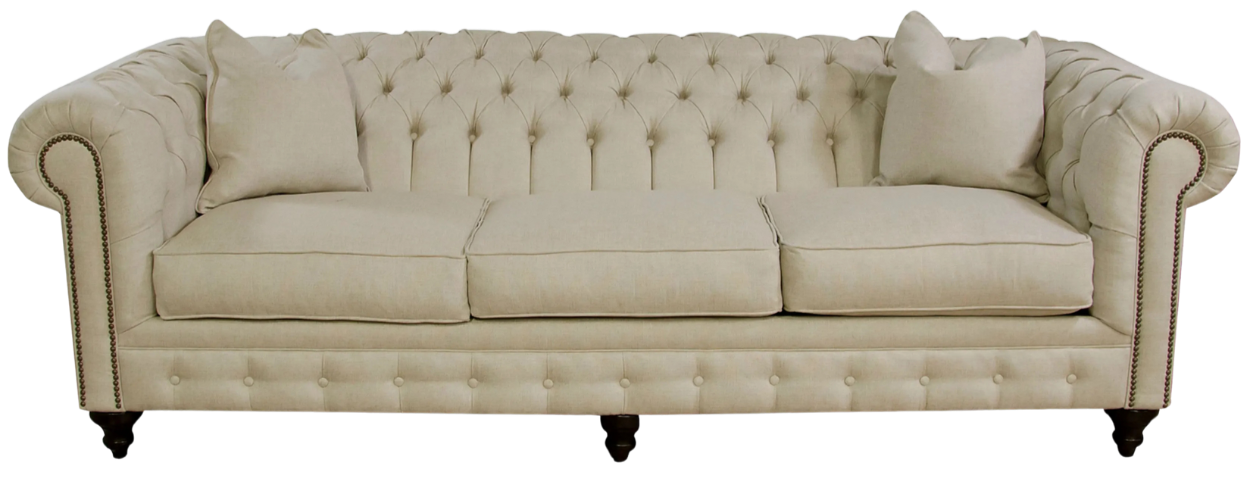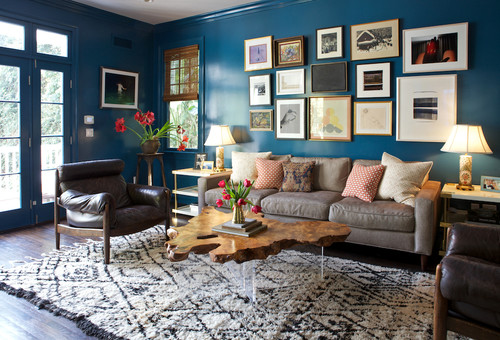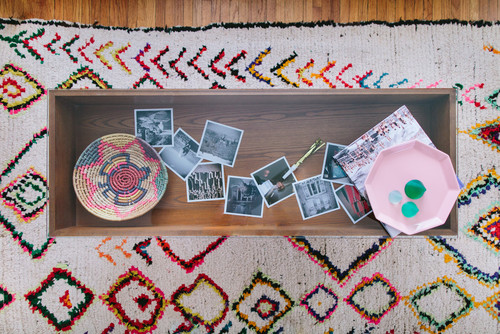Your Cart is Empty
RUGS
FURNITURE
A Look That Goes With Everything - Moroccan Rugs

Rugs have been woven by the indigenous people of Morocco since the Paleolithic Era. Traditionally, Moroccan rugs have been woven by tribal peoples for their utility rather than for decorative purposes. Twentieth-century Moroccan rugs are widely collected in the west and are almost always woven by tribes people who do not seek nor possess formal artistic training. (1)
Transitional Family Room by Los Angeles Interior Designers & Decorators Taylor Jacobson Interior Design
Contemporary Living Room by Miami Beach Interior Designers & Decorators L. Pumpa Designs
The Berber tribes and other Moroccan nomads wove rugs to use as saddle blankets, tent sides and carpets, sleeping mats and covers. Thick carpets of natural wool provided warmth while thinner rugs were lighter and easier to transport and to wear. Moroccan weaving became more colorful as the desert and mountain people incorporated plant, insect, and mineral dyes into their designs. But the real artistry of the rug relied on talent and technique, often passed down through generations. (2)
Traditional Living Room by Atlanta General Contractors Cablik Enterprises
The Berber tribes weave a particular style known as Beni Ouarain. They use "live wool" - that is wool shorn from a sheep, rather than taken from a sheepskin after the sheep has been killed. The main characteristic of a Beni Ouarain carpet is the "shaggy" pile. This makes them very comfortable underfoot and they are much sought after for use in winter. (3)
Contemporary Family Room by Ridgefield Interior Designers & Decorators Beth Rosenfield Design LLC
Eclectic Nursery by Dallas Media & Bloggers Sarah Greenman
There is a craze underfoot. Crack open any shelter magazine or visit nearly any decorating blog and you will be overwhelmed with images of stylish rooms that are anchored by a singular shared object: the Moroccan rug. (4) And with good reason. They are versatile, come in a variety of colors and styles, and there is a price point for every project budget. Best of all, these rugs will never go out of style - they have been a classic for hundreds and hundreds of years.
Transitional Living Room by Los Angeles Interior Designers & Decorators Taylor Jacobson Interior Design
You can go the one of a kind (#OOAK) route or choose what's called a "production" hand knotted version, such as Sahara by Loloi.

Libbie Holmes, photographer; Ashleigh Weatherill Interior Design
Beni Ourain tribal designs were woven from memory, not patterns, so they have an appealing “quirkiness.” This quirkiness is exactly what makes these rugs appealing to interior designers. “They give a room, particularly a cold modern room, warmth and patina as well as a dose of ethnicity,” says Timothy Whealon of Timothy Whealon Interiors in New York. The converse is also true: The idiosyncratic patterns of Beni Ourain designs give more traditional rooms a much needed shot of modernity. (5)
Craftsman Living Room by New York Architects & Building Designers Katie Leede & Company Studio

Eclectic Living Room by Los Angeles Interior Designers & Decorators Taylor + Taylor
One is not limited to ivory and white either. Moroccan design rugs, which also include trellis and tile patterns, are made in other colors as well. More and more weavers are experimenting with applying color to these traditionally cream-colored rugs.

No matter your taste (or budget) Moroccan style rugs are a reliable way to go when pulling together your space. Check out our entire collection of these beautiful rugs.










